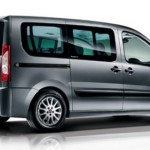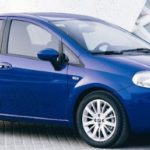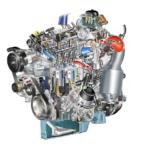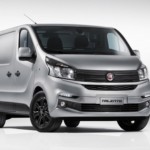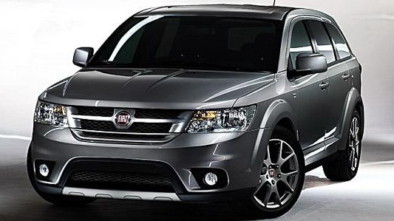Fiat Coupe 1994 - 2000 - Used, engine, history
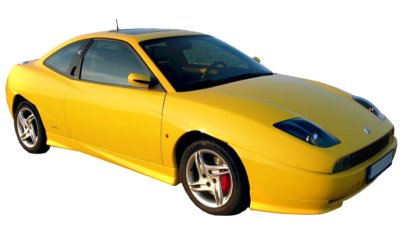
fiat coupe
Fiat Coupe (1994 - 2000) - “Small Ferrari“It has all the features of an expensive sports car: exotic, attractive and aggressive design, excellent driving performance, but it has a very popular price. Unfortunately, the Fiat Coupe has inherited the shortcomings of sports cars, it is very sensitive and requires quality and regular maintenance. Turbo models are characterized by fantastic tuning capabilities and easy achievement of an enviable 300 hp!
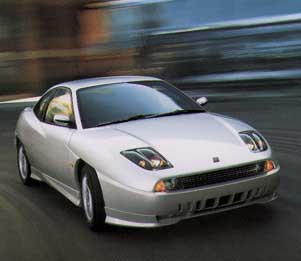
fiat coupe
HISTORY - FIAT COUPE
The Fiat Coupe is based on the Fiat Tipo platform, started production in 1993 and went on sale in 1994.
The engine range was initially 2.0l 16v - 142hp and 2.0l turbo - 195hp that were taken from Lancia (the latter engine came from the Delta Integrale). In 1996, the offer was extended by a Barchett engine - 1.8l 16v with 130 hp, and in 1997 a revision was made on 2.0 l engines and the existing ones were replaced by a fifth cylinder 2.0 20v developing 147 hp and 220 hp in the version with turbine. The car was designed by Fiat, but production was entrusted to Pininfarina due to its small series.
The design is very specific considering that the man who signed the Fiat Coupe design, Chris Bungle, was later the head of the design team. BMWthat can be noticed along similar lines of the Z8. There are also many specific details in the design of this car: the door handles are stacked to make the door more compact, the odd headlights, the bonnet like the ones used by motorcycles, and the newer models have a button to start the car. The turbocharged Fiat Coupe came standard with the Differential Shutter (LSD) - Viscodrive and with better Brembo brakes. In 1998, the "20v turbo Limited Edition" appeared, bringing in a six-speed gearbox and many more technical and aesthetic details. In 1999, a six-speed transmission was added to the standard equipment of the turbo model. Production of this car ceased in 2000.
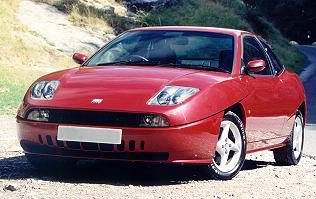
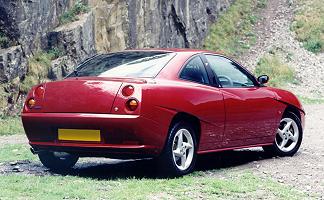
TECHNICAL DATA - FIAT COUPE
Transverse motor mounted forward with front wheel drive.
Engines:
- 1995 cc (84 x 90 mm) 4-cylinder in-line, two camshafts in head 16V turbo - 195 bhp @ 5500 rpm
- 1747 cc (82 x 82.7 mm) 4 in-line cylinders, two cams in head 16V - 130 bhp @ 6300 rpm
- 1995 cc (84 x 90 mm) 4 in-line cylinders, two cams in head 16V - 142 bhp @ 6000 rpm
- 1998 cc (82 x 75.65 mm) 5-cylinder in-line, two cams in head 20V - 147 bhp
- 1998 cc (82 x 75.65 mm) 5 cylinder in-line, two camshafts in head 20V turbo - 220 bhp @ 5750 rpm
Suspension:
- Front: MacPherson plus anti-roll bar, Last: Independent plus anti-roll bar
- Shaft distance : 2540 mm Width (front / back): 1483 mm / 1468 mm (front: 1491 mm on 20V turbo)
Brakes
- Forward: discs, ventilated, 284 mm (305 mm on 20V turbo) diameter
- Back: Discs 240 mm in diameter
- Hand brake connected by cable
Transmission: 5 or 6 speed manual
PERFORMANCE - FIAT COUPE
|
Model
|
volume
[cm] |
power
[K S] |
torque
[Nm] |
max speed |
acceleration |
weight
[Kg] |
| 1.8 16v |
1747
|
131
|
164
|
205
|
9,2 sec.
|
1255
|
| 2.0 16V |
1995
|
139
|
180
|
208
|
9,2 sec.
|
1325
|
| 2.0 16V turbo |
1995
|
190
|
290
|
225
|
7,5 sec.
|
1395
|
| 2.0 20V |
1998
|
147
|
188
|
212
|
8.9 sec.
|
1345
|
| 2.0 20V |
1998
|
154
|
186
|
215
|
8,4 sec.
|
1345
|
| 2.0 20V turbo |
1998
|
220
|
310
|
250
|
6,5 sec.
|
1385
|
TUNING - FIAT COUPE
Light modifications of the Fiat Coupe include the installation of a sports filter and the installation of a better exhaust, and they bring moderate gains in power of the order of 10 hp at higher speeds. Installing better software (popular "chip reprogramming") also brings better performance and these gains are not small at all, and are relatively easy to achieve - calculate that the 20VT model with 220 hp will get about 50 hp and about 100 Nm.
Brakes can be improved by mounting better discs, using sport pads as well as better brake hoses. In addition, everything that can be done on the engine of the popular Lancie Delta Integrale can be performed on the Coupe with identical or better results, but it is already a high level of modifications and they are for fans of extreme tuning.
WEAK POINTS - FIAT COUPE
- Brake discs for sports cars usually do not have a long shelf life, which is the case with the Coupe.
- The timing belt is worn intensely, so change is required before the factory-specified interval.
- Exhaust is susceptible to damage, so it is advisable to put on a tuner exhaust, which is usually far more durable than factory (and cheaper).
Although the Fiat Coupe is made in a small series, some of the flaws may not have been noticed and some have been declared common, the Fiat Coupe does not bother with standard Fiat flaws. The rear brakes also do not have sufficient braking effect on the rear axles, and the headlamps often break apart. There is no rust issue with these cars.
WHAT SHOULD YOU CONSIDER WHEN PURCHASING?
RED KEY- The Fiat Coupe comes with a built-in Category 1 immobilizer. The Fiat CODE system requires a red key (except for models from late 1995 and early 1996 with 16v and 16v turbo engines) to allow a copy of the keys or to allow reprogramming of existing ones. Every car (this applies generally to Fiat) must have a red key. Without it, the car will be harder to sell, and you may not even be able to drive it, buying a complete new lock with the right key is expensive. However, due to the proverbial resourcefulness of our masters, even though you do not have a red key, you will not have any problems with the car.
Color this car is a little touchy so it's easy to see the damage, which can again be used as an argument for reducing the price.
Turbo - After a test drive before shopping (hope you try the car before shopping?), Leave the car running for 5 - 10 minutes on the back. If the seals on the turbine fail, you will see bluish smoke from the exhaust. Otherwise, the turbine starts at 2500 - 3000 rpm. Pay special attention to the turbine, since although the engine may have been replaced, the turbine is probably not modified and is very vulnerable to poor maintenance. Also note that the turbine has limited pressure in the first and second gears.
Brakes - When braking at 100km / h, make sure that the steering wheel shakes, if it shakes, the wheels may be damaged and need to be replaced. Also, avoid holding the brake while the car is stationary after intensive braking, which speeds up the wear process.
Edge - This car has rather large tires, so it is advisable that you do not have to change them immediately after purchase.
Uneven work on the back - The worse option is that the injectors are clogged or worn out, or the cheaper version is that the dirty valve is on the back.
Oil - According to factory data, oil consumption is high, normal consumption is 1 l per 1000 km.
The steering wheel - Steering rack was taken over from Alfa GTV, which brought a real sports feeling and very communicative management. The downside is that the angle of the wheels - "einschlag" is very small.
Suspension - If blows are heard, it is either forks or the ends of anti-roll bars. The forks may pound when accelerating or decelerating when worn out.
Transmission - Standard Italian soft, should not be a problem.
Headlights - If larger cracks are present or the headlight is broken, be sure to take this into account as the headlights are very expensive and must be replaced completely, not just the cover. The lids are otherwise covered with a thin protective layer that peels off over the years. This is not a problem and can be solved by polishing or applying a new protective layer.
The interior is very rich in standard equipment. Air conditioners and Clarion sound systems are standard at 20VT, and leather seats are very common.
Recommendation of similar texts:

Hi there, I am Mladen and I am an auto enthusiast. I started this blog years ago to help like minded people share information about latest cars, car servicing ideas, used car info, exotic cars, and auto technology. You will find helpful articles and videos on a wide variety of cars - Audi, Mercedes, Toyota, Porsche, Volvo, BMW and much more. Ping us if you have anything cool to share on latest cars or on how to make older cars more efficient, or just want to say hi!


